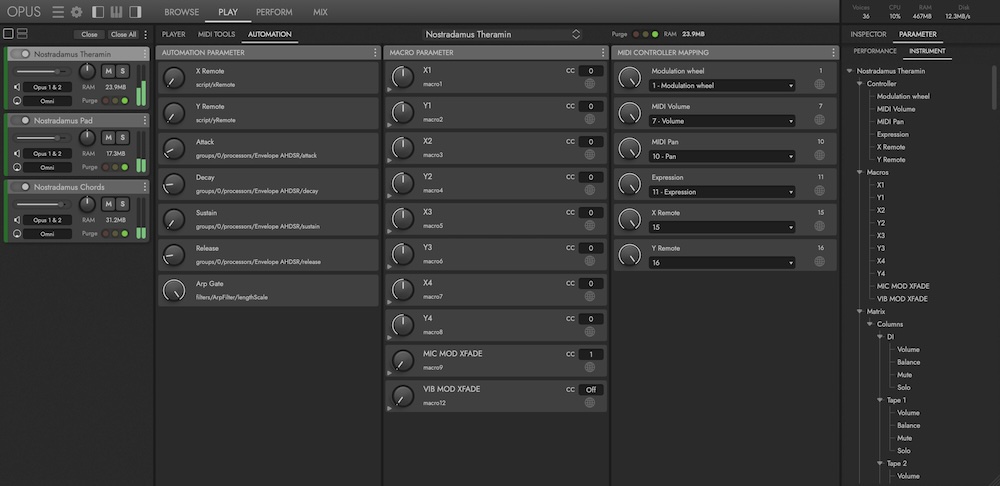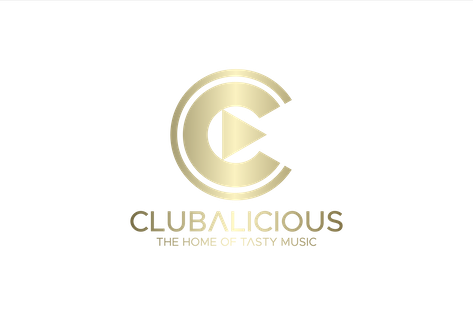-
 play_arrow
play_arrow
Clubalicious Clubalicious Radio
-
 play_arrow
play_arrow
London Calling Podcast Yana Bolder

| MIX VERDICT: EASTWEST ICONIC |
| THE TAKEAWAY: “Music creators and composers for film and gaming are bound to find EW’s last-century throwback a very satisfying investment.” |
| COMPANY: EastWest • www.soundsonline.com PRICE: $199, Iconic perpetual license; $199/year or $19.99/month, ComposerCloud+ subscription; Opus, free. PROS: • Sounds awesome. • Powerful, well-designed UI affords boundless programming. • Excellent documentation. CONS: • Steep learning curve if you’re unfamiliar with Opus. • No Undo, Redo. |
They don’t make ’em like they used to. Like my trusty 1996 Toyota Tacoma pickup truck, still making miles. Or the dead-on Suunto Vector ABC (altimeter, barometer and compass) wristwatch, backstopping my wilderness adventures since 1998. Or the gloriously euphonious synthesizers from half a century ago, heard on countless hit records.
Which brings me to EastWest. Using state-of-the-art recording gear, tape machines and re-amping techniques, EW sampled the most treasured synths from the 1970s and early ’80s, wrapped them in a massive 137GB virtual instrument, and then had Anthony Marinelli (the synth programmer for Michael Jackson’s Thriller album) lead the creation of more than 500 presets—121 of which meticulously reproduce the rapturous sounds we all remember from hit records of the era. The result is EW’s aptly named Iconic.
Iconic’s sampled instruments include the ARP 2600 (released in 1971), Moog Music Minimoog Model D (1970), Oberheim OB-X (1979), Sequential Prophet-5 (1978), Yamaha CS80 (1977), New England Digital Corporation Synclavier II (1979), Roland Jupiter-8 (1981) and—an extra, outside the synth category—Fender Rhodes electric piano (mass-produced in the 1970s, but introduced earlier).
To be clear, Iconic does not reproduce these instruments’ exclusive control sets, but rather offers a wide-ranging sample library—containing more than 76,000 samples—of their most memorable sounds, which you can exhaustively alter using Iconic’s own comprehensive UI.
Korg Collection 4 — A Mix Real-World Review…in the USVI
Arps, basses, leads, effects, plucks, “keys” (Rhodes and Synclavier), pads and polys were first programmed and then recorded at 24- bit depth and 44.1kHz sampling rate, using multiple recording techniques and different equipment: DI, “Tape 1,” “Tape 2,” reamped (miked both close to and far from the amp) and, in some cases, printed to a Studer J37 tube-based tape machine.
Iconic opens in Opus, EastWest’s free sample-engine software (standalone application and plug-in), which powers all of the company’s virtual instruments. Opus’ GUI is essentially a blank canvas that produces no sound until you load a paid-for EW library, whereupon it becomes a powerhouse.
You can audition instruments in a hosted library’s browser with a mouse click; arrange splits and stacks for multi-instrument setups (“Performances” you can store for later recall); assign MIDI triggers such as keyswitches and MIDI CCs for custom multi-articulation instruments; apply EQ, compression, distortion, reverb, delay and more than two dozen other effects per instrument in a virtual mixer; and employ powerful scripting language (developed by Wolfgang Schneider, the creator of Native Instruments’ Kontakt) to extend the underlying software’s functionality how you wish.

BOTH CLASSIC AND MODERN
In Iconic’s browser, where you are able to narrow available selections through searching by attribute (e.g., pads), timbre (warm, crunchy and so on) and keyword, presets (“instruments,” in EW parlance) are grouped in three main categories:
- “Classic” precisely re-creates the iconic sounds heard on bygone hit records, the presets conspicuously named to hint at their pedigree.
- “Classic Elements” presents samples of single synths and keys in their elemental form.
- “Beyond Iconic” refines the whole lot for use in modern genres such as EDM and hip hop.
Each instrument you load appears in a collapsible Instrument Rack on the left side of the UI along with its dedicated controls (volume, pan, mute, solo and purge) and I/O menus (assignments for Opus’ audio-output channels, and the instrument’s MIDI channel and MIDI input port); purging removes the instrument from memory, whereafter only the notes you play get loaded into RAM, reducing the instrument’s memory allocation. MIDI Polyphonic Expression is supported, with certain limitations.
Once you’ve loaded one or more instruments, it’s time to get creative. Click on the Play button in Opus’ Navigation Bar at the top of the UI, and then the Player subpage button below it, to open Iconic’s excellent main user interface, where you’ll find an armada of controls for independently programming each instrument to the nines.
In the main UI’s upper-right corner is the customary amplitude ADSR (“Amp Env”), providing attack, decay, sustain and release controls for modifying a patch’s volume curve over time. Immediately below this are controls for three types of modulators—a second ADSR (“Mod Env”) and, alternately selected in the LFO section, a step editor and conventional LFO—that you can use to modulate the Amount parameter for Iconic’s ring modulator and/or the cutoff frequencies for lowpass and high-pass filters.
The LFO offers four waveforms: sine, triangle, saw and pulse. Rotating a Shape knob modifies the shape of the elemental waveform further, and the waveform’s cycle can optionally be synchronized to a subdivision of your DAW’s tempo to create rhythmic pulses in time with your music. Rather than modulate with continuously variable values, as a sinusoidal LFO would, the step editor modulates in discrete steps—as many as 32—that you adjust to have different velocities, applying gated rhythms to the target parameter.
Turning up Env and LFO knobs in Iconic’s ring mod(-ulator) and filter sections increases the intensity to which the Amp Env and LFO/ step editor modulation sources, respectively, act on their target parameters. A third intensity knob (“Velo”) uses MIDI velocity as its source to modulate the LPF or HPF’s corner frequency and/or the ring mod’s Amount parameter. The bipolar nature of the knobs lies in the fact that raising or lowering the knob from the 12-o’clock position respectively modulates in a positive or negative direction.
Controls for Iconic’s filters are situated at the bottom of the main UI. Three types of lowpass filters (including a ladder filter similar to those used by classic analog synths) and two types of high-pass filters can each be shaped using controls to adjust their cutoff frequency and resonance. The ring mod’s controls sit to the left of the filters’. You can set the ring mod’s carrier oscillator to any frequency from 0.01 Hz to 16 kHz to achieve a variety of bell-like and metallic tones.

STEP CHANGE
You can do plenty with Iconic’s included 16-step arpeggiator. Bypass its individual steps or adjust their velocities. Program the arpeggiator to play notes in different orders (including randomly) and repeat over a one- to five-octave range, while optionally synching playback to a selected subdivision of your DAW’s tempo. Make the pattern swing to a shuffle beat if you wish, and turn the Gate knob so the notes become more staccato or sustained.
Iconic also offers two portamento modes: Legato, in which pitch-glide between notes only occurs when notes are played in legato fashion, and Poly, for gliding between chords. You can adjust the time it takes for the glide to complete, from 5 ms to 2.5 seconds, using the Time knob. Portamento can also be used to create pitchglide between notes in your arpeggiator pattern.
To the right of the portamento section, controls let you transpose Iconic’s output in semitones and cents up to ±2 octaves. Two nearby master controls respectively adjust Iconic’s final output gain and the degree to which it is affected by MIDI Velocity.
On the left and right sides of the UI are controls for many types of audio effects: auto pan, stereo doubler, drive (fuzz, bit-crushing, and three types of distortion), chorus (three types), phaser, convolution reverb (nearly 200 IRs!) and delay (in series or parallel configuration with the reverb). Each effect has a dedicated bypass button and, except for auto pan, a Mix control for adding more or less spice.
You can also control any of four fixed combinations of the effects (“MacroFX” named Stutter, Dream, Space and Grit) using the XY pad at the center of Iconic’s main UI. Dragging the pad’s node with a mouse, or by using MIDI CCs #15 (x coordinate) and #16 (y coordinate), simultaneously adjusts multiple parameters specific to the selected multi-effect: the Stutter effect’s LFO rate (x axis) and LPF cutoff frequency (y axis); Dream’s stereo-doubler spread and autopan rate and width (x) and reverb mix (y); Space’s chorus rate (x) and delay feedback and mix (y); and Grit’s phaser rate (x) and bitcrusher “decimate” amount (y).

OUTSIDE THE MAIN UI
Iconic’s Play page also offers three subpages that take you out of the instrument’s main user interface. The MIDI Tools subpage offers a chorder (producing a user-defined chord when a single note is played), humanizer, restrict-toscale function (constraining played notes to a user-defined scale), MIDI compressor and more.
The Automation subpage is where you prompt Iconic’s parameters to populate its plugin’s automation lanes in your DAW—many are already set up that way by default—and, together with an Inspector panel on the right side of the UI, link MIDI CCs to control parameters in real time; alternatively, you can right-click on a control in the main user interface to use MIDI Learn.
In the Articulations subpage, you assign specific MIDI triggers (keyswitch, MIDI CC, velocity or Program Change message) to individual articulations in a multi-articulation instrument, letting you switch from one articulation to another with a simple gesture.
In addition to the Browse and Play buttons, two others populate the Navigation Bar: Perform and Mix. Clicking on the Perform button opens a page in which you can set up key ranges, octave transpositions, and MIDI triggers for instrument stacks and multitimbral splits.
The Mix button opens a view of Opus’ mixer, where numerous additional effects are available, including a tape saturator, tremolo, and SSL Bus Compressor, Channel Strip and Transient Shaper. Iconic’s DI, Tape 1, Tape 2, Reamp Close and Reamp Far samples (if available for a currently loaded instrument), as well as FX buses for Delay and Reverb, each get their own mixer channel fitted with a fader, stereo meters, and mute and solo buttons. Using your Mod Wheel (CC#1) or that in Opus’ (hide-able) virtual keyboard, you can control the balance between the DI and Tape 2 mixer channels in real time. Iconic is available for outright purchase and through ComposerCloud+, EW’s subscription-based service offering more than 70 VI collections.
SOMETHING FOR EVERYONE
Despite its evident complexity, you don’t have to become a power user to produce huge sounds with Iconic. Synth dabblers will find scores of multi-instrument stacks in the browser and can readily build their own with a few mouse clicks. Digging deeper, Iconic’s main user interface offers a comprehensive control set for experienced synth programmers to create unique patches from scratch, tweaking “pure” instruments loaded from the browser’s Classic Elements category.
That’s all relatively easy. However, if you’ve had no prior experience with Opus (i.e., Iconic is your first EW library), once you start venturing into its many menus, setting up multi-articulation and multi-timbral instruments, linking MIDI CCs to FX parameters and mixing alternate samples, and adding effects to each loaded instrument in the mixer, the learning curve becomes quite steep, and Opus’ GUI-wide omission of an Undo (and Redo) function makes any accidental changes you make an impediment to a completely unhindered workflow.
Fortunately, the operation manuals for both Iconic and Opus are comprehensive (195 pages combined!) and well-written—and the sonic rewards for deep diving are immense. Music creators and composers for film and gaming are bound to find EW’s last-century throwback a very satisfying investment. To borrow a line from Van Halen, “Go ahead and Jump!”
Written by: Admin
Similar posts
Recent Comments
No comments to show.Featured post

Latest posts
Current show
Upcoming shows

Finnish Dance Chart
Top 40 Hottest Dance Tracks In Finland
09:00 - 11:00
Fresh Is Fresh
This Weeks Hottest Releases
11:00 - 16:00
Stereo Productions
Chus Ceballos
16:00 - 17:00
Scandinavian Dance Chart
Top 40 Hottest Dance Tracks In Scandinavia
17:00 - 19:00
The House Crunch
Terri B
19:00 - 20:00Chart
Powered by Dee jay promotions visit us













 Invalid license, for more info click here
Invalid license, for more info click here